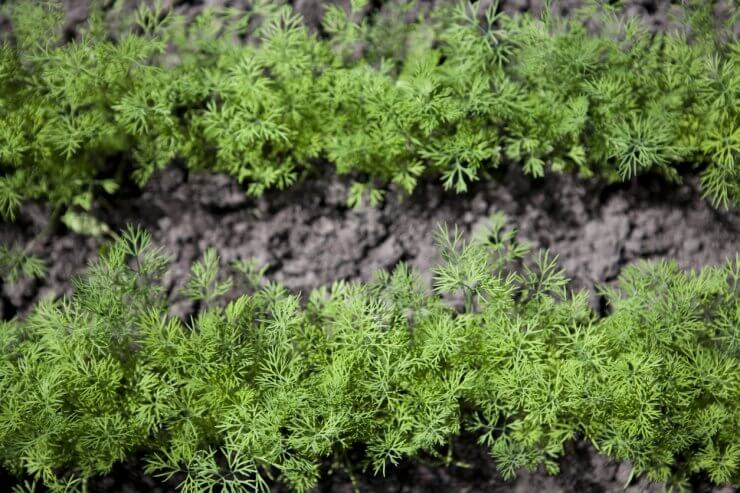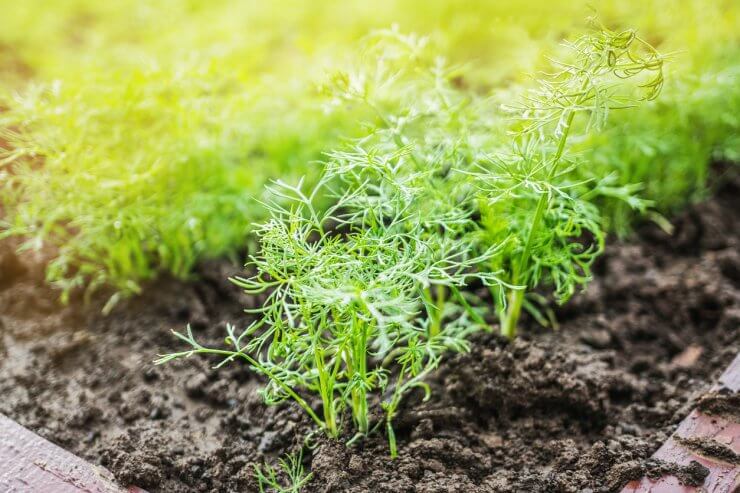
Dill growing in open ground
Like most produce, dill loves sunshine and moist, well-draining soil. Dill is not particularly picky about the quality of its soil, as long as it has a pH that averages about 6.5 and organic matter or compost tea is added periodically.
Dill hails from the Mediterranean and Western Asia, but it feels comfortable in both cool and warm temperatures in USDA Hardiness Zones 3 to 11. If you live in a hot climate, though, your dill can benefit from partial shade.
The keys to having happy dill plants are sunlight, well-drained soil, and not-too-hot temperatures. If you can provide those three things, you can grow dill just about anywhere.
Raised beds and open ground

Young dill in raised beds
A raised garden bed or planter is an excellent option for growing dill if you don’t have soil that’s ideal for dill (heavy clay soil, for example). Raised beds also help with drainage, which is essential for healthy dill plants. You can even buy raised beds or build one yourself to fit your space.
Watering and weeding will be easier if you plant your dill in a raised bed or planter although harvesting may become a bit of challenge if you plant your dill in a raised bed that’s on the high side, as plants can reach 4 feet. If you fill a raised bed with packaged garden soil, you’re providing a cleaner and healthier environment for your plants from the outset.
Packaged garden soil means less weeding than you’d have from digging a hole in the ground; and with a raised bed or container, there’s less bending down to do your weeding!
Dill is really a gardener-friendly plant, and it will grow well in open ground—as long as it has plenty of sunshine, good drainage, and the right pH (5.5 to 7.5).
How do you grow your dill—in open land, in raised beds, or in containers? Why do you prefer your method? Please tell us your tips and tricks for creating an awesome dill patch.


 Previous
Previous

